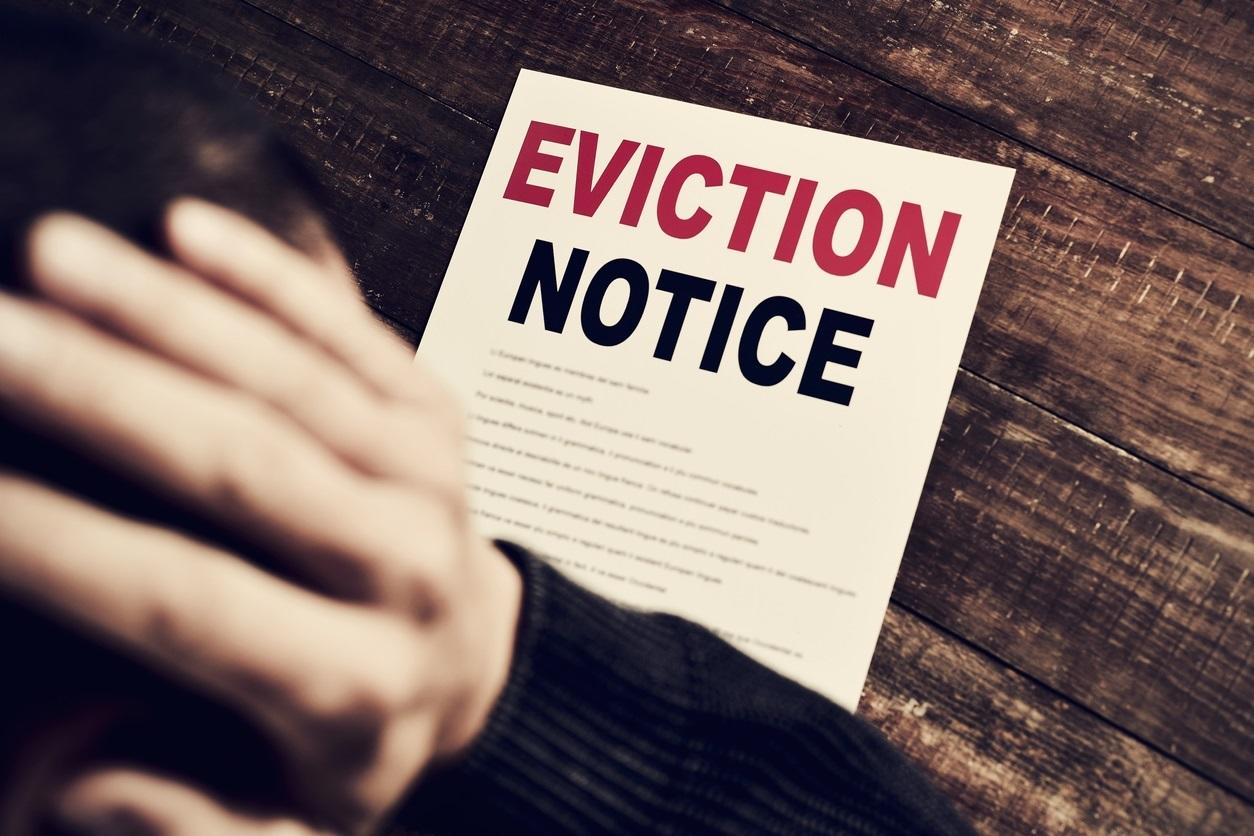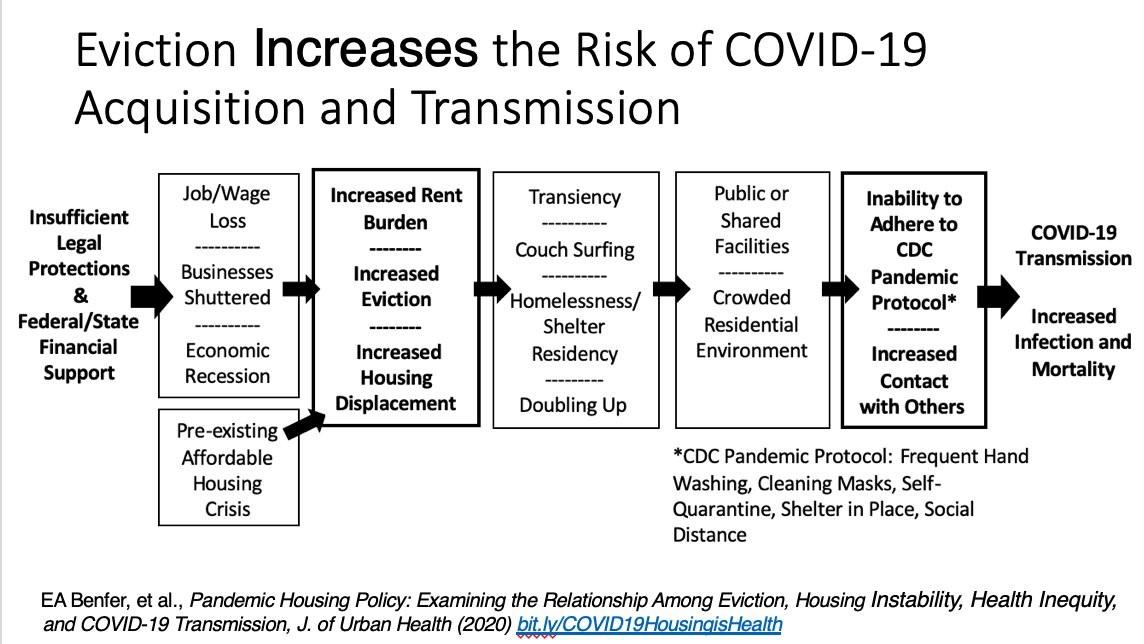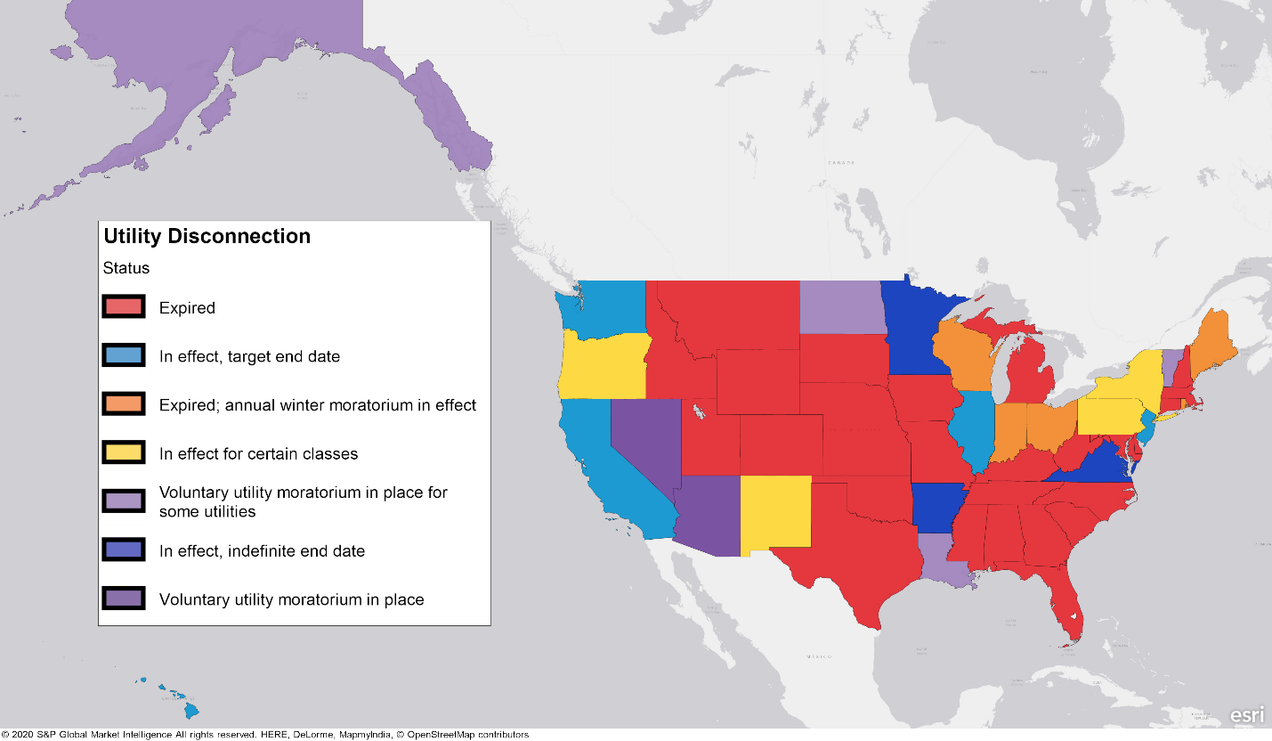Deron Lovaas, NRDC Cross-posted from NRDC blog.
This is an especially dangerous time for millions in this country, with people of color and people with limited income most at risk, to be facing eviction. Daily temperatures are dropping routinely to the 30s or below in much of the United States. Meanwhile, the latest surge of COVID-19 cases, hospitalizations, and deaths means it will be a winter like no other. With so many out of work and unable to pay their rent and utility bills, policymakers must step up to protect people and communities, especially given the evidence that evictions and utility service shutoffs don’t just result from the pandemic—they accelerate and exacerbate it.  The United States—especially our state and federal governments—could help change our path in 2021. First there are the obvious things, including masking up and socially distancing. Other decisions in the hands of policymakers help fight the pandemic, too. For example, as my colleague Sheryl Carter notes, keeping lights, heat, and running water on by avoiding service shutoffs and creating plans for dealing with mounting arrearages are commonsense steps that some governors, legislatures, and public utility commissions have taken. Others must follow suit, and everyone must extend and strengthen existing safety nets—in a pandemic access to energy and water at home are must-haves for the sake of people’s health and lives—and get ahead of the need to deal with mounting consumer debt.
The United States—especially our state and federal governments—could help change our path in 2021. First there are the obvious things, including masking up and socially distancing. Other decisions in the hands of policymakers help fight the pandemic, too. For example, as my colleague Sheryl Carter notes, keeping lights, heat, and running water on by avoiding service shutoffs and creating plans for dealing with mounting arrearages are commonsense steps that some governors, legislatures, and public utility commissions have taken. Others must follow suit, and everyone must extend and strengthen existing safety nets—in a pandemic access to energy and water at home are must-haves for the sake of people’s health and lives—and get ahead of the need to deal with mounting consumer debt.
What about evictions?
Keeping the lights/heat/water running only works when people have a place to call home. Evictions—which can be spurred by unpaid utility bills—already severely harm many people and communities, with costs and consequences rippling out from housing instability as the Opportunity Starts at Home campaign-–of which NRDC is a member–described in congressional testimony. Tragically, 30 million to 40 million people in this country could be evicted in the near future due to COVID-related economic shocks. At a time when we are being counseled to stay home as much as possible, including for work and school, preventing evictions is a no-brainer. And yet the national Centers for Disease Control (CDC) eviction moratorium expires December 31st. And many state moratoria also expire when we turn our calendars to 2021.
This is unacceptable, especially given a vicious cycle studied by a group of academics last week, which you may have heard about on National Public Radio. Conceptually, it makes sense as illustrated by this chart included in one of the two studies (here and here):  In their first paper the authors also note differing, unjust pandemic impacts on Black, Indigenous, and People of Color communities found by the CDC, which “reports Black Americans are dying at 2.1 times the rate of non-Hispanic whites. Indigenous Americans as well as Hispanic/Latinx persons face an infection rate almost 3 times the rate of non-Hispanic whites. Asian, Black and Hispanic/Latinx persons are 1.3, 4.7, and 4.6 times more likely to be hospitalized with COVID-19, respectively, than non-Hispanic whites.” (note: CDC just updated data showing the disparities are even higher). They then describe precisely what underpins these inequitable outcomes:
In their first paper the authors also note differing, unjust pandemic impacts on Black, Indigenous, and People of Color communities found by the CDC, which “reports Black Americans are dying at 2.1 times the rate of non-Hispanic whites. Indigenous Americans as well as Hispanic/Latinx persons face an infection rate almost 3 times the rate of non-Hispanic whites. Asian, Black and Hispanic/Latinx persons are 1.3, 4.7, and 4.6 times more likely to be hospitalized with COVID-19, respectively, than non-Hispanic whites.” (note: CDC just updated data showing the disparities are even higher). They then describe precisely what underpins these inequitable outcomes:
The deep underlying health disparity can be traced to the inability to social distance in many low-wage jobs, crowded and substandard living conditions due to poverty and eviction, bias among health care providers, and disparate access to health care. Other social determinants of health, like poverty and access to clean air and water, have driven larger proportions of people of color to develop comorbidities with COVID-19, like asthma or hypertension, that contribute to higher mortality rates. Furthermore, repeated exposure to racism in its many forms, acts as a form of toxic stress that chips away at the body. This process of “weathering” results in health deterioration, the onset of chronic conditions and, premature aging at the cellular level, all of which likely play a prominent role in COVID-19 disparities.
The authors’ second paper crunches the data and finds that
Lifting moratoria translated to a total of 433,700 excess cases and 10,700 excess deaths between March 1 and September 3, 2020. Thus, eviction moratoria could be effective mechanisms for suppressing COVID-19 infection and mortality.
If there’s any good news it’s that thanks to the tireless work of these academics and local and national affordable housing advocates, evictions are getting attention as in this fantastic new piece by Ted Koppel on CBS Sunday Morning. Among Koppel’s interviewees is Matthew Desmond, who literally wrote the book on evictions (and earned a Pulitzer Prize for it), and who now teaches at Princeton and runs a national Eviction Lab.
Desmond and his team, whose vital work is supported by the JPB Foundation (which also supports our Energy Efficiency for All partnership), has also created a state eviction policy scorecard driven by an impressive list of collaborating partners. The scorecard itself is deeply unsettling, and is based on 17 measures in five categories that cover the stages of eviction processes: Initiation of eviction, the court process, enforcement of eviction order, short-term supports, and tenancy preservation measures post-pandemic. A mere six states (plus D.C.) receive a majority of the 5 stars awarded: Minnesota, Washington (D.C.), Washington, Oregon, Hawaii, and Connecticut. And only 15 states received one star or more.
As alarming as this is, it needs to be overlaid with the map of state energy utility shutoff moratoria, most of which expired as of the start of December as you can see in the map below. Water shutoff moratoria are even rarer.

We urge federal policymakers to provide assistance and relief to millions of struggling renters (and, by extension, owners of affordable housing who are also struggling) entering the holidays crushed by thousands of dollars of postponed payments.
Thankfully President-elect Biden and his team are moving quickly to put a plan in place, and the new administration arrives next year. Allies at the Eviction Lab, the National Housing Law Project, and the National Low-Income Housing Coalition produced a memo to guide their actions to extend and strengthen a CDC moratorium. Specifically, it should be 1) extended; 2) improved; and 3) enforced. CDC should also establish a utility shutoff moratorium, invoking the same legal authority that underlies the eviction moratorium. And Congress should include a national, uniform eviction moratorium and utility shutoff moratorium in new COVID relief and recovery policy, along with rental and utility bill assistance.
Winter is coming. To help people and communities live through it, state and federal policymakers must build the eviction and shutoff policy bridges between our current crisis and a better future in 2021 and beyond.

